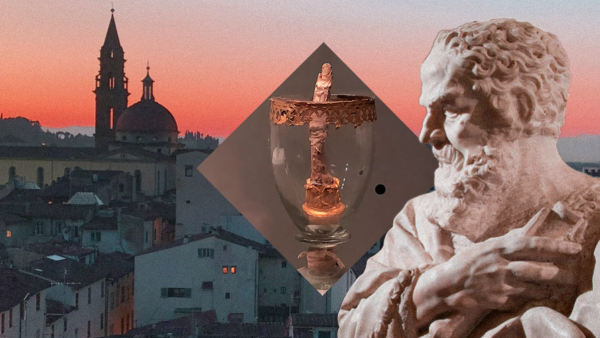
These days, Florence is overrun with tourists eager to see the Duomo, Michaelangelo’s David and the Botticelli paintings in the Uffizi Gallery. But Renaissance Florence was more than just a mecca for great artists. It’s also the city where a new scientific understanding of the world took shape. You can get a taste of this paradigm shift just around the corner from the Uffizi. The Galileo Museum, perched along the Arno River, has a magnificent collection of early scientific instruments, including the telescope that Galileo used to discover Jupiter’s moons.
One of the museum’s most remarkable displays is Galileo’s long middle finger that’s encased in a gilded glass egg. Like many relics of saints that you see in Italian churches, this is a kind of secular relic that was removed from Galileo’s body after his death. What’s so striking is how the finger stands straight up, in apparent defiance of the Catholic church. Galileo lived his final years under house arrest after he flouted the church’s teachings about the order of the cosmos.
Dartmouth cosmologist Marcelo Gleiser is inspired by Galileo’s unrelenting search for the truth. “We’re at a moment in our history where we need a new renaissance,” he told Anne and me during a recent trip to Italy. We spent five days at Marcelo’s new think tank, the Island of Knowledge, located just an hour from Florence. We listened to talks and recorded interviews with a small group of scientists and philosophers. You’ll hear what they said on our latest show, "Welcome to the Island of Knowledge." I have to say, it was eye-opening to learn about the emerging science that regards all life on Earth as interconnected, bound together by a kind of planetary intelligence.
– Steve
